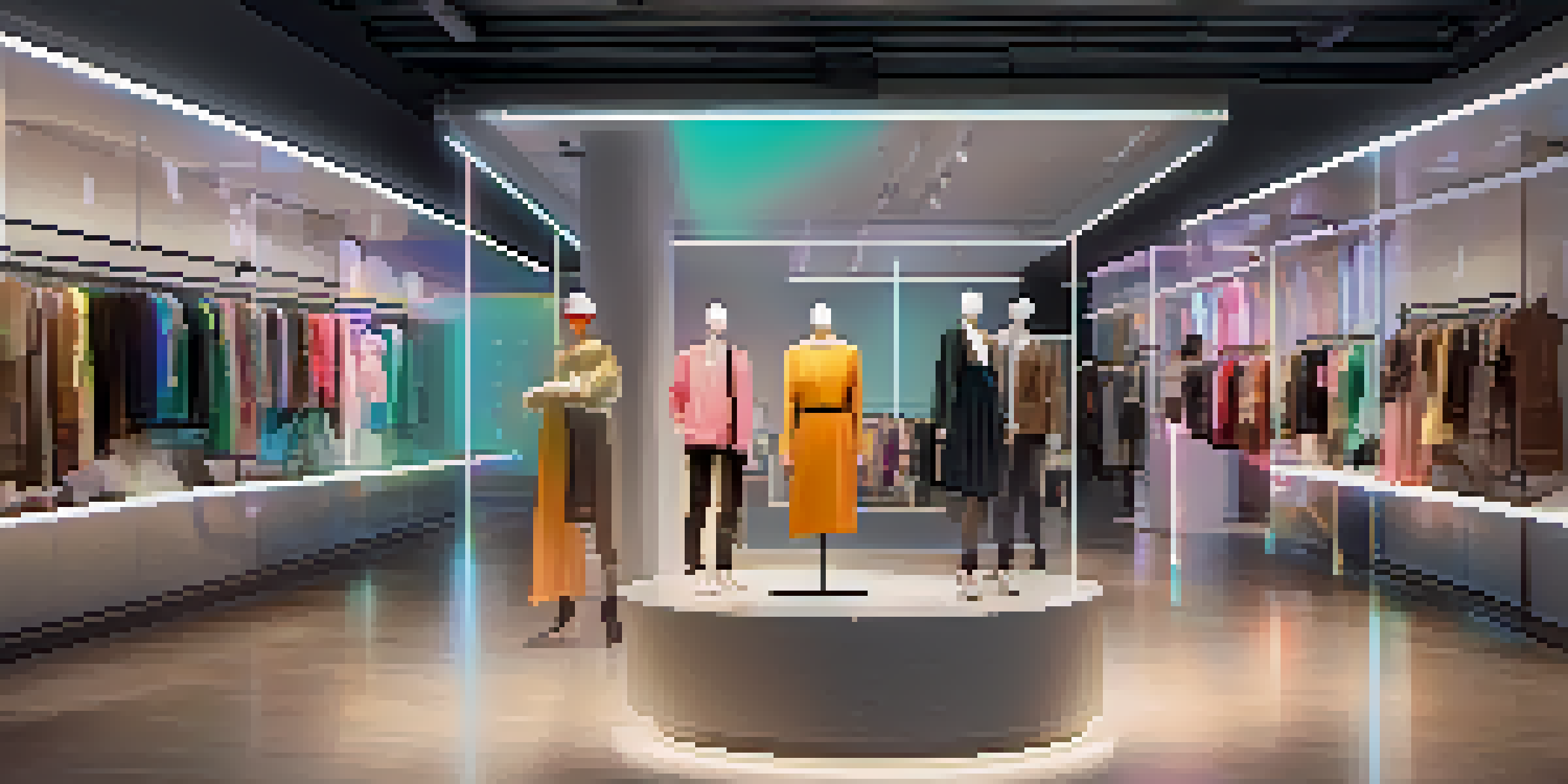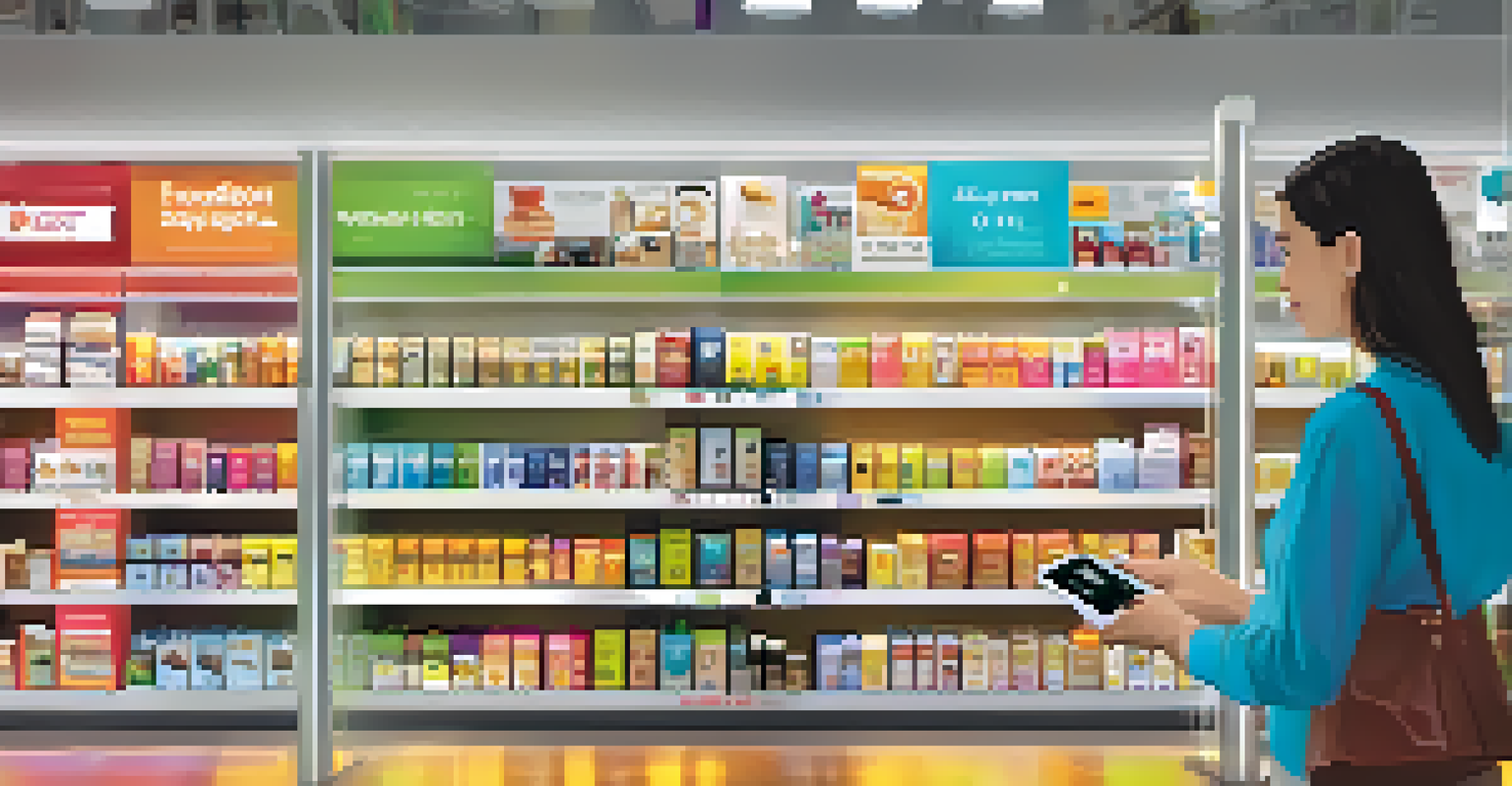Augmented Reality Trends in Retail: What to Expect Next

The Rise of Augmented Reality in Retail Shopping
Augmented reality (AR) is transforming the retail landscape, enhancing how customers interact with products. By overlaying digital information onto the real world, retailers are creating immersive experiences that drive engagement. Imagine trying on clothes virtually or visualizing how a piece of furniture fits in your home before making a purchase.
Augmented reality is not just a gimmick; it’s a revolutionary tool that transforms the way consumers interact with products.
This technology has become a powerful tool for brands aiming to bridge the gap between online and offline shopping. Customers can see how products look and function in their own lives, leading to more informed purchasing decisions. As AR continues to evolve, its applications in retail are expanding, promising even more exciting possibilities.
With consumers increasingly seeking personalized experiences, AR offers a unique way to cater to these demands. The potential for customization, from virtual try-ons to tailored recommendations, is just the beginning of what AR can achieve in retail.
Enhancing Customer Experience with AR Solutions
Customer experience is at the heart of retail, and AR technologies are transforming the way that experience is delivered. By integrating AR into the shopping journey, retailers are able to create interactive and memorable moments for shoppers. For example, a cosmetics brand might allow customers to see how a lipstick shade looks on their own lips through their smartphone camera.

These AR solutions not only enhance enjoyment but also help brands build loyalty. When customers have a fun and engaging experience, they're more likely to return. The ability to try before you buy without any physical consequences makes AR an appealing option for many consumers.
AR Transforms Retail Experiences
Augmented reality enhances customer engagement by allowing virtual try-ons and product visualizations.
Moreover, AR can provide valuable information about products, making shopping more efficient. Imagine scanning an item with your phone to access reviews, care instructions, or even video tutorials, all while standing in the aisle.
AR and the Future of In-Store Shopping
The in-store shopping experience is undergoing a significant transformation with the integration of AR technologies. Retailers are leveraging AR to create interactive displays that draw customers in and encourage exploration. Picture a store where you can point your phone at a product and instantly see customer reviews or special offers pop up on your screen.
The future of shopping is not just about products, but about experiences that connect consumers to brands in meaningful ways.
This level of interactivity can turn a mundane shopping trip into an engaging adventure. It also helps retailers to stand out in a crowded market, as unique AR experiences can attract attention and drive foot traffic. The more innovative the experience, the more likely customers are to share it on social media, further amplifying its reach.
In the future, we can expect AR to become even more integrated with the physical shopping environment, potentially reshaping store layouts and product placements. Retailers that invest in these technologies will likely reap the rewards as they create an unforgettable shopping journey.
Personalization through Augmented Reality
Personalization is a key trend in retail, and AR is stepping up to the plate to deliver customized experiences. Through AR, retailers can gather data about customer preferences and behaviors, allowing them to tailor offerings in real-time. For instance, a shopper could receive personalized recommendations for outfits based on their past purchases and preferences.
This level of personalization not only enhances customer satisfaction but also increases conversion rates. When customers feel that brands understand their needs, they are more likely to make a purchase. AR can facilitate this connection by presenting products that align with individual tastes.
Personalization Boosts Sales
AR enables retailers to offer tailored recommendations, increasing customer satisfaction and conversion rates.
As technology advances, we can expect even more sophisticated personalization through AR. Imagine a future where your shopping app recognizes your style and suggests items while you browse in-store, making the shopping experience seamless and enjoyable.
The Role of AR in E-Commerce Growth
E-commerce has exploded in recent years, and augmented reality is playing a pivotal role in its growth. By integrating AR features into online shopping platforms, retailers can provide customers with a more engaging way to explore products. For instance, furniture retailers often use AR to allow customers to visualize how a piece of furniture would look in their home before they buy it.
This capability reduces uncertainty and enhances confidence, which are crucial factors for online shoppers. When customers can see and interact with products in a virtual space, they are more likely to complete a purchase. Additionally, AR can help reduce returns by allowing customers to make better-informed decisions.
As more shoppers turn to online platforms, the demand for AR experiences will continue to rise. Retailers that adopt these technologies will not only improve their sales but also solidify their position in the competitive e-commerce landscape.
AR's Impact on Brand Engagement
Brand engagement is essential for retaining customers, and AR is a powerful tool for enhancing this connection. By offering interactive experiences, brands can capture consumer attention and foster deeper relationships. For example, a brand might create an AR game that encourages users to interact with their products in a fun, memorable way.
These engaging experiences can lead to increased brand loyalty and word-of-mouth marketing. When customers enjoy their interactions with a brand, they are more likely to share their experiences with friends and family, amplifying the brand's reach. AR can turn passive viewers into active participants, creating a community around the brand.
Challenges in AR Adoption
Despite its potential, retailers face hurdles such as technological accessibility, content creation costs, and privacy concerns.
As AR technology continues to advance, brands will have even more opportunities to engage their customers creatively. We can expect to see more innovative campaigns that leverage AR to tell compelling stories and create meaningful connections.
Challenges and Considerations for AR in Retail
While the potential for augmented reality in retail is immense, there are challenges that brands must navigate. One major concern is the technological barrier; not all customers have access to the latest devices capable of supporting AR experiences. Retailers need to consider their target audience and ensure that the technology is accessible to maximize engagement.
Additionally, creating high-quality AR content can be resource-intensive. Brands must invest time and money into developing these experiences, which can be daunting, especially for smaller retailers. It's crucial to find the right balance between innovation and practicality.

Lastly, privacy concerns are also a consideration when implementing AR technologies. Retailers must be transparent about how they collect and use customer data, ensuring that they maintain trust while delivering personalized experiences.